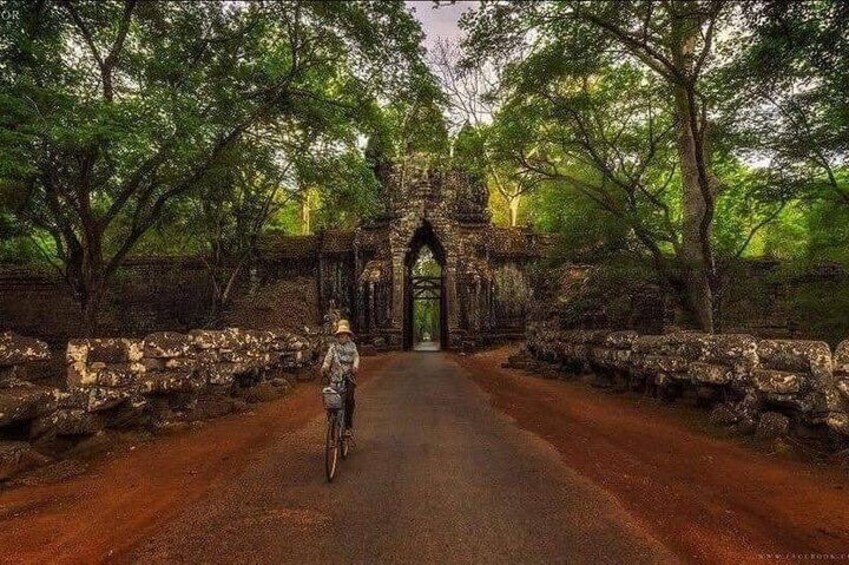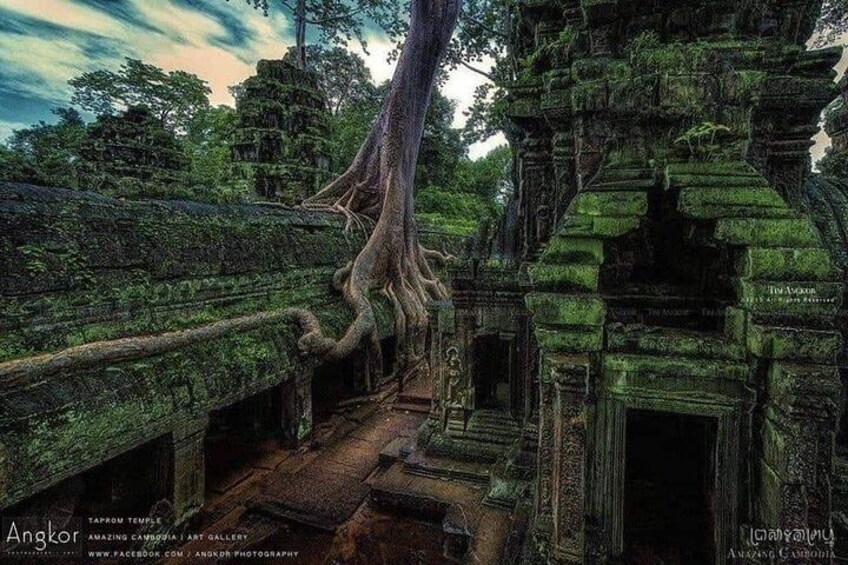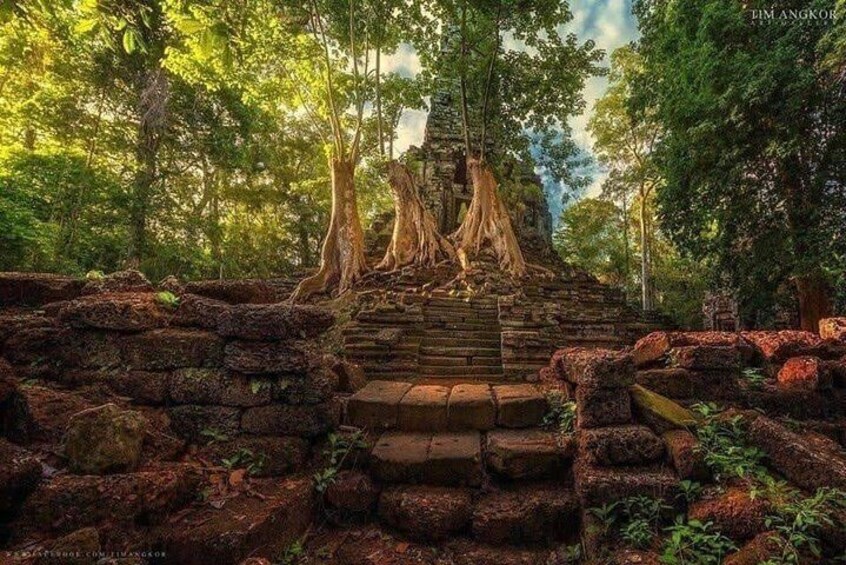




2 Day Private Tour in Cambodia
By Cambodia Transportation
Free cancellation available
per traveller*
*Get a lower price by selecting multiple travellers
Features
- Free cancellation available
- 2d
- Mobile voucher
- Instant confirmation
Overview
This is the private tour, we would be suggestion from 2 people to 10 people for a group. Our driver and tour guide will take you around and my guide will be with you all the times.
Activity location
- Angkor Thom
- Angkor Wat,
- 17259, Siem Reap, Cambodia
Meeting/Redemption Point
- Krong Siem Reap
- Krong Siem Reap, Siem Reap Province, Cambodia
Check availability
Group Tours
- 2d
- English
Van
Language options: English
Price details
CA $406.20 x 1 TravellerCA $406.20
Total
* Select 8 traveller tickets to get our lowest price of CA $50.78 per traveller
What's included, what's not
- Bottle water and cold towel
- English Speaking Guide
- Air-conditioned vehicle
- Entrance fees
- Personal expend
- Any expend not mention in programme
Know before you book
- Service animals allowed
- Public transport options are available nearby
- Infants are required to sit on an adult’s lap
- Specialised infant seats are available
- Suitable for all physical fitness levels
Activity itinerary
Day 1: Small Cycle
- 4 stops
- Meals: Not included
- Accommodation: (Optional) Accommodate 3* Hotel $40/night for twin or double with breakfast. Additional extra bed $15/N with breakfast.
Angkor Thom
- 3h
- Admission ticket not included
Leave for tour of Angkor Thom (comprising of the Bayon Temple, Terrace of Leper King and the Elephant Terrace). Optional sunrise.
The city of Angkor Thom, founded by Jayavarman VII in the 12th century, was one of the largest of all Khmer cities and remained the capital until the 17th century. We enter the city through the monumental south gate, its tower feature four faces pointing in each of cardinal directions with the elephants holding up the main gate,
preceded by a no less impressive Avenue of Gods and asuras lining the bridge across the structure moat.
The Bayon or state temple of Jayavarman VII is one of the most enigmatic and power religious constructions in the world. It is a unique mass of “faces tower” which create a stone-mountain of ascending peaks. There were originally 49 towers of which 37 are still standing today. Most are carved with four faces on each cardinal point. The central tower has many more.
Terrace of the Elephants
- 1m
- Admission ticket not included
The Elephant Terrace is at the heart of Angkor Thom and looks out overage Royal spare. It marks the entrance to the Royal Palace and was the focal point for Royal receptions. The Carving of the elephants along its Walls gives it its modern name.
Terrace of Leper King, This massive terrace is named after the 15th century sculpture that was discovered on top of it. It probably dates back to the reign of Jayavarman VII and has been restored in a manner, which allows visitors to explore the earliest to most recent additions by actually entering the internal layers of the structure.
Angkor Wat
- 3h
- Admission ticket not included
Build between the 9th and 14th centuries, the City of Angkor is one of the grandest monuments ever constructed. The entire complex covers approximately 164sq miles with over 200 temples. Among the 30 temples that are accessible today, the most famous is Angkor Wat, the largest religions building in the world, with a volume of stone equalling that of the Cheops pyramid in Egypt.
Conceived by Suryavarman II early 12th century, Angkor Wat took an estimated 30 years to build. Unlike most other Khmer temples, it faces West, the most likely reason is because the temple was dedicated to Vishnu, who is sometimes associated with the West.
Phnom Bakheng
- 1m
- Admission ticket not included
Phnom Bakheng, late 9th century was the state temple of the first capital of Angkor. Begin the ascent from the east side at the foot of the hill close to the road. The view from the top is magnificent, particularly of Angkor Wat to the South East and is the most popular spot for tourist at sunset. The three prominent hills of the area, Phnom Bakheng, Phnom Krom and Phnom Bok were all crowned with temples at the same period.
Day 2: Big Cycle
- 6 stops
- Meals: Not included
- Accommodation: Not included
Banteay Srei
- 1h
- Admission ticket not included
Banteay Samré is a temple at Angkor, Cambodia, located 400 metres to the east of the East Baray. Built during the reign of Suryavarman II and Yasovarman II in the early 12th century, it is a Hindu temple in the Angkor Wat style
Srah Srang
- 1h
- Admission ticket not included
Sras Srang was dug in the mid-10th century, by initiative of Kavindrarimathana, Buddhist minister of Rajendravarman II.[1] It was modified around the year 1200 by Jayavarman VII,[2]:125 who added the laterite landing-stage at its western side, probably because the East Baray had been overwhelmed by sediment and had begun malfunctioning.[3]
French archaeological expeditions have found a necropolis close to it.[4]
Banteay Kdei
- 1h
- Admission ticket not included
Banteay Kdei (Khmer: ប្រាសាទបន្ទាយក្តី; Prasat Banteay Kdei), meaning "A Citadel of Chambers",[1] also known as "Citadel of Monks' cells",[2] is a Buddhist temple in Angkor, Cambodia. It is located southeast of Ta Prohm and east of Angkor Thom. Built in the mid-12th to early 13th centuries AD during the reign of Jayavarman VII (who was posthumously given the title "Maha paramasangata pada"[3]), it is in the Bayon architectural style, similar in plan to Ta Prohm and Preah Khan, but less complex and smaller. Its structures are contained within two successive enclosure walls, and consist of two concentric galleries from which emerge towers, preceded to the east by a cloister.[4][5]
This Buddhist monastic complex is currently dilapidated due to faulty construction and poor quality of sandstone used in its buildings, and is now undergoing renovation. Banteay Kdei had been occupied by monks at various intervals over the centuries until the 1960s
Ta Prohm Temple
- 2h
- Admission ticket not included
Ta Prohm (Khmer: ប្រាសាទតាព្រហ្ម, pronunciation: prasat taprohm) is the modern name of the temple at Angkor, Siem Reap Province, Cambodia, built in the Bayon style largely in the late 12th and early 13th centuries and originally called Rajavihara (in Khmer: រាជវិហារ). Located approximately one kilometre east of Angkor Thom and on the southern edge of the East Baray, it was founded by the Khmer King Jayavarman VII[1]:125[2]:388 as a Mahayana Buddhist monastery and university. Unlike most Angkorian temples, Ta Prohm is in much the same condition in which it was found: the photogenic and atmospheric combination of trees growing out of the ruins and the jungle surroundings have made it one of Angkor's most popular temples with visitors. UNESCO inscribed Ta Prohm on the World Heritage List in 1992. Today, it is one of the most visited complexes in Cambodia’s Angkor region. The conservation and restoration of Ta Prohm is a partnership project of the Archaeological Survey of India and the APSARA (Authority for the Protection and Management of Angkor and the Region of Siem Reap).[3
Chong Kneas Floating Village
- 3h
- Admission ticket not included
The famous floating village of Chong Kneas has become somewhat of a circus in recent years. Tour groups have taken over and there are countless scams to separate tourists from their money. In-the-know travellers opt for harder-to-reach but more memorable spots such as Kompong Khleang or Prek Toal.
For all its flaws, Chong Kneas is very scenic in the warm light of late afternoon and can be combined with a sunset from the nearby hilltop temple of Phnom Krom.
Artisans Angkor
- 1h
This school is a joint venture between the Cambodian and French governments to train
young Cambodians to acquire skill in traditional sandstone carving, wood work and silk weaving. A showroom displays samples of their works which are for sales. Made to order pieces are also available. Raffles International is a patron of the school, providing both educational supports for its students and an outlet to sell the crafts made by them.
Location
Activity location
- Angkor Thom
- Angkor Wat,
- 17259, Siem Reap, Cambodia
Meeting/Redemption Point
- Krong Siem Reap
- Krong Siem Reap, Siem Reap Province, Cambodia
Best Deals on Things to Do
Experience the wonders of the world up close with great deals on things to do near and far. We offer one-of-a-kind activities that allow you to explore Siem Reap your way. Whether you love nature, culture, food, or a bit of adventure, we have the perfect activity for you.